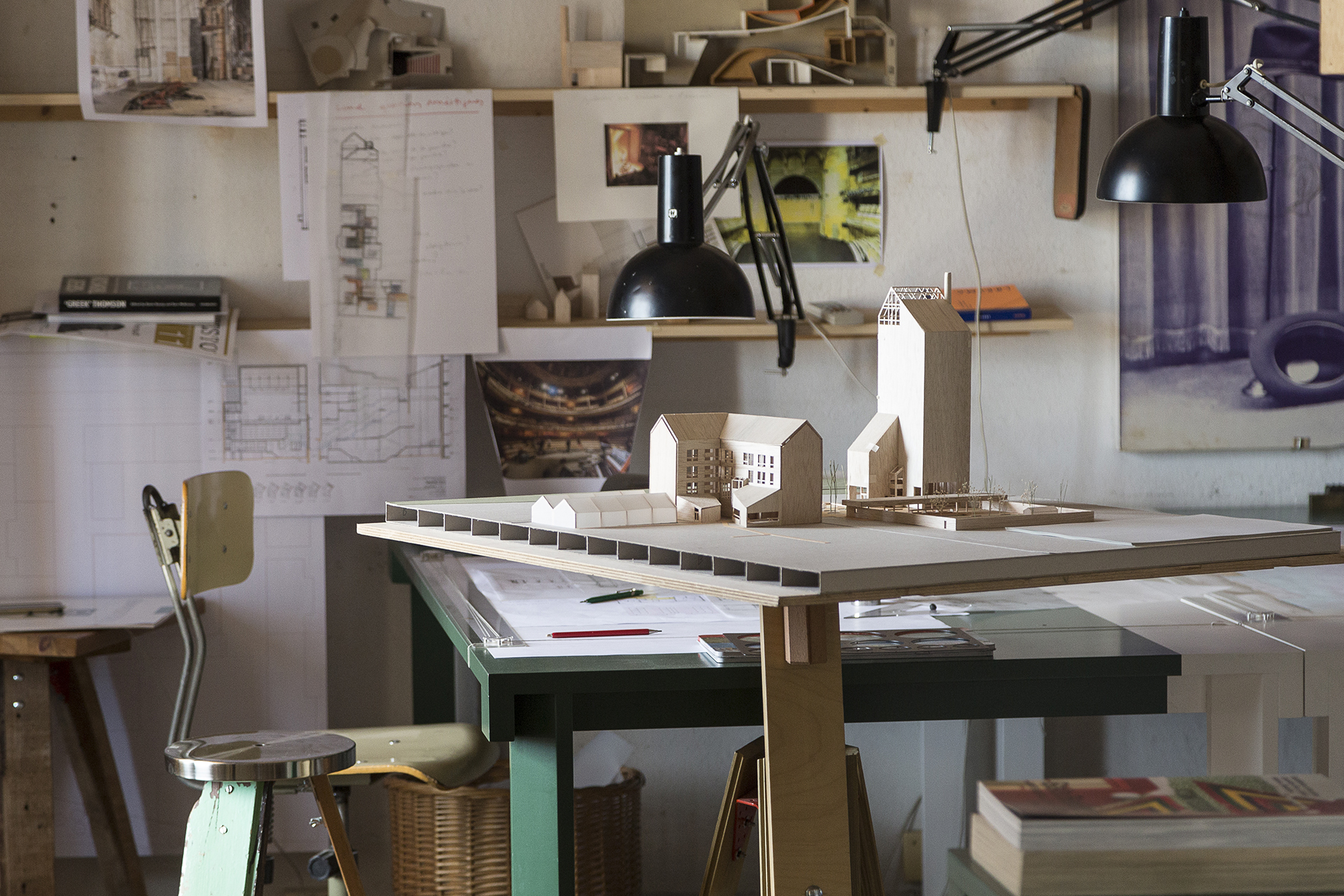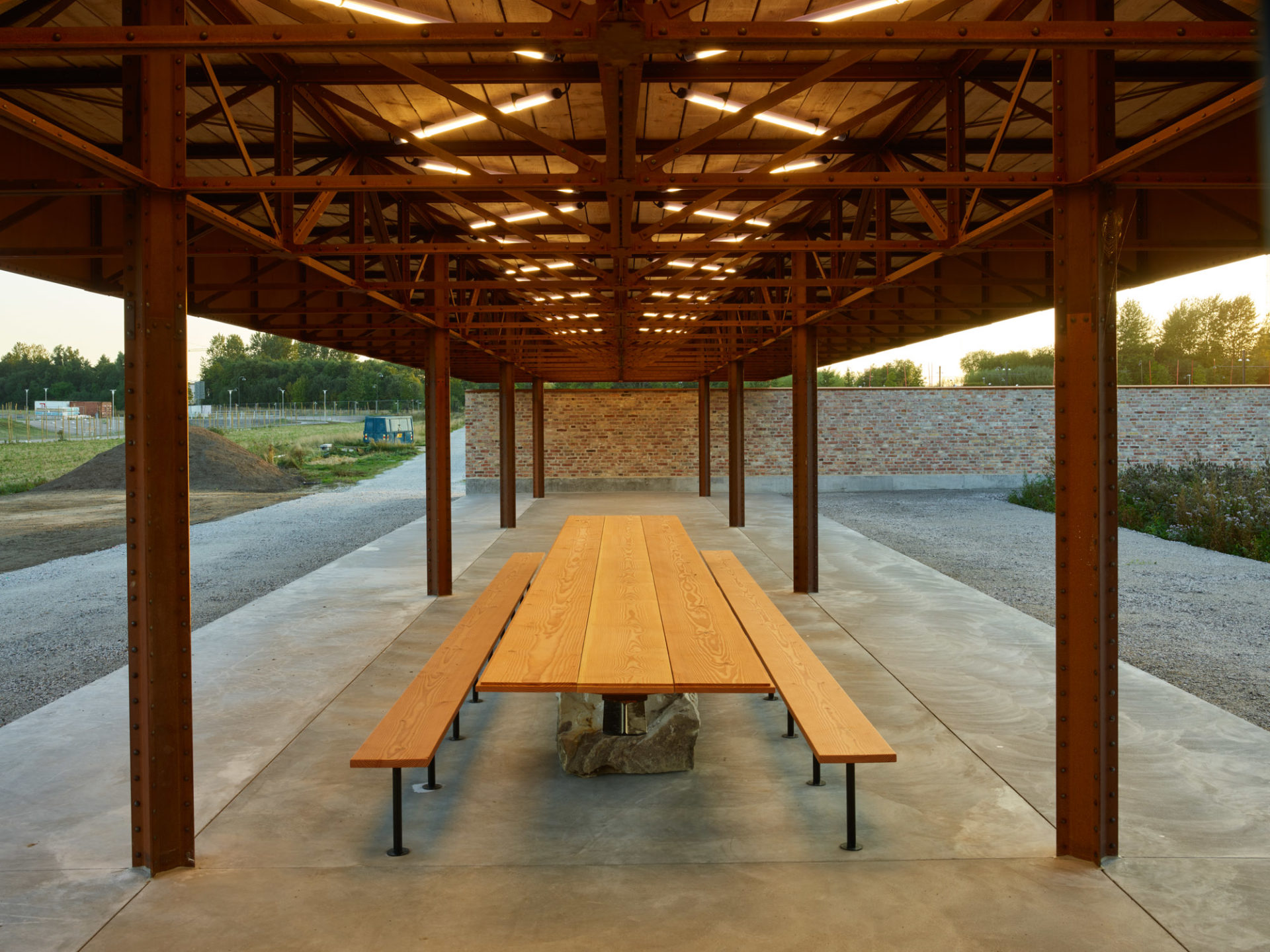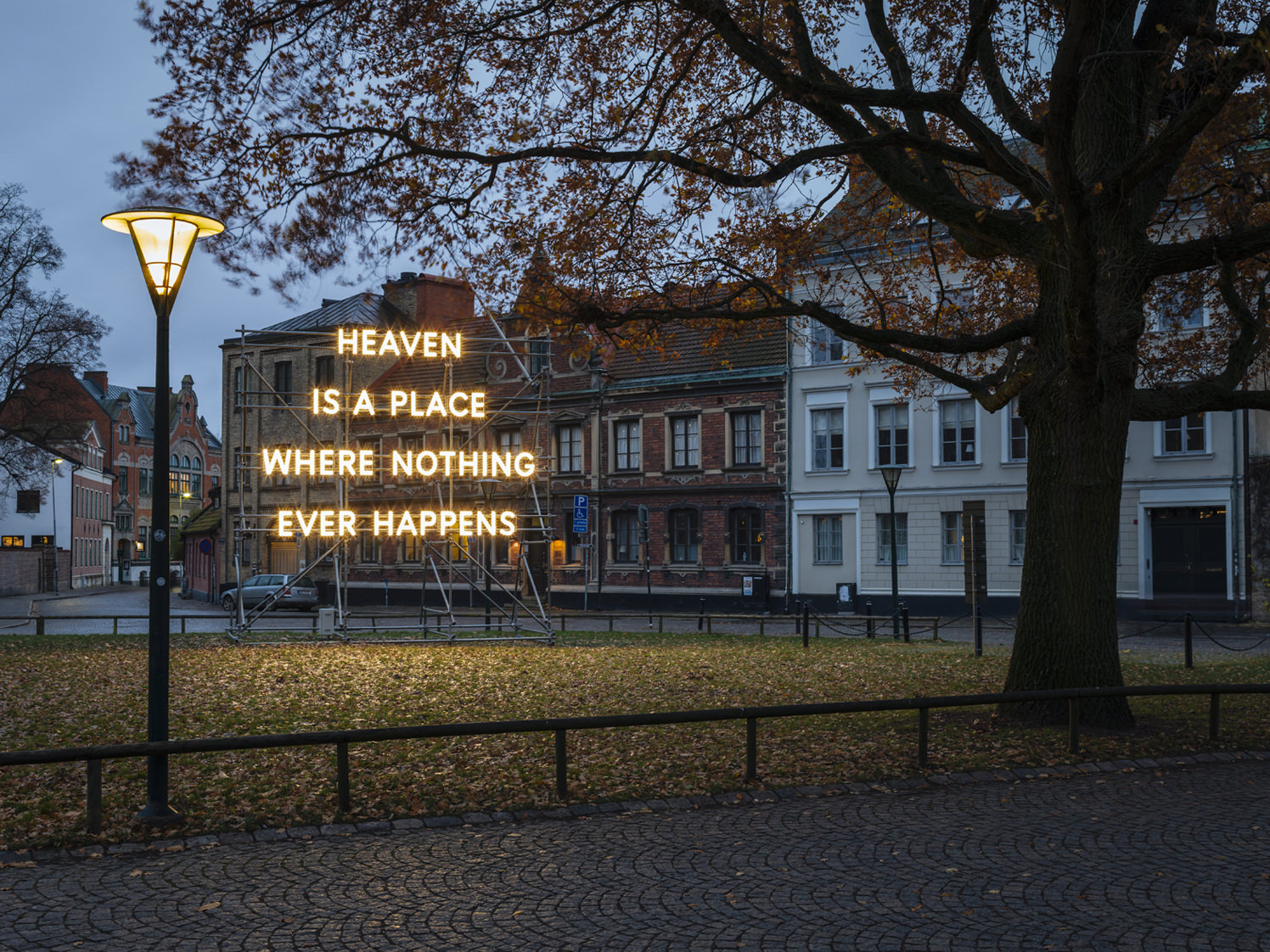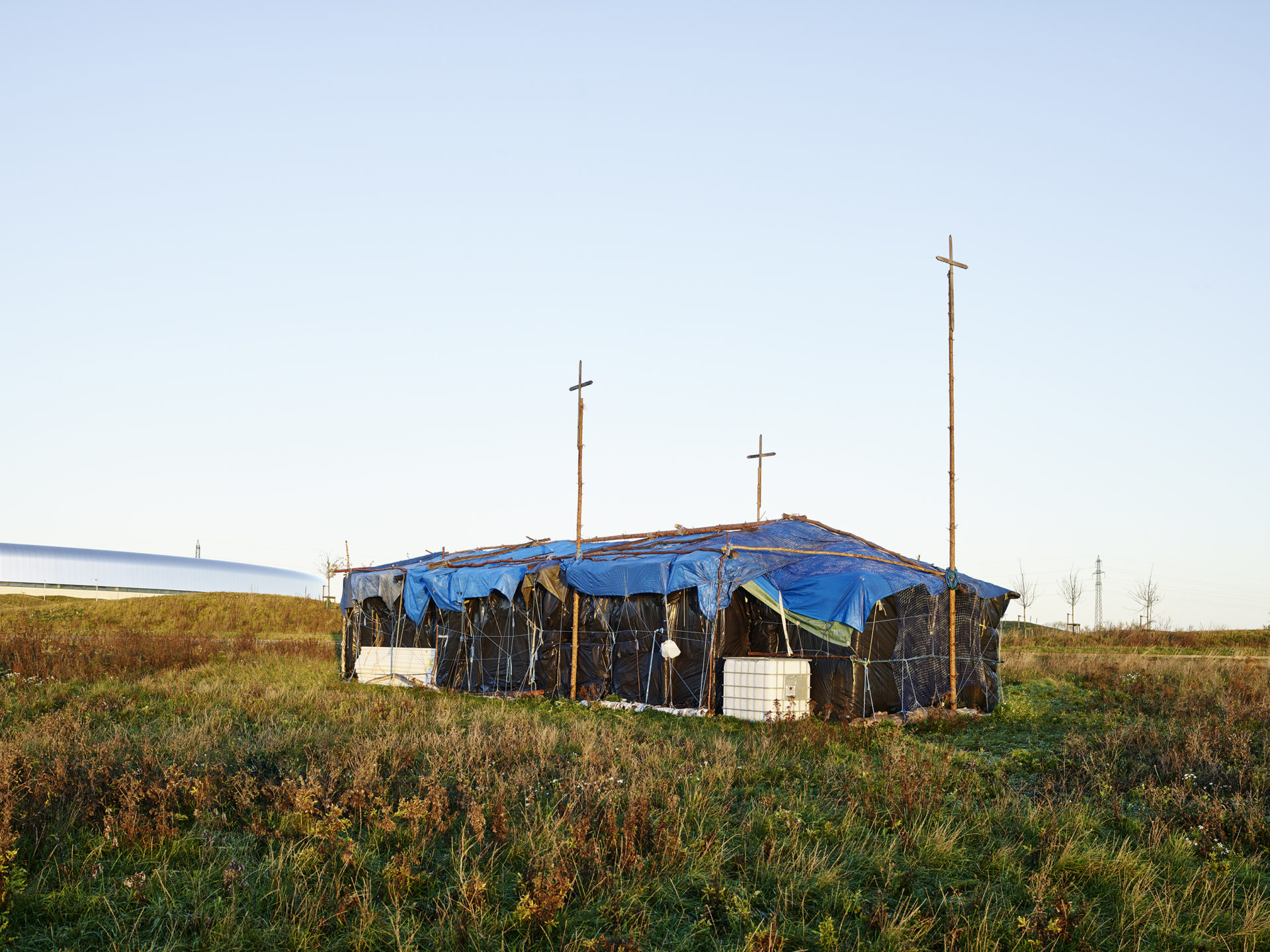Our programme of commissions has been devised to bring a public focus to our activities and to encourage debate and engagement locally, nationally and internationally. Each of the artists and architects we commission bring with them their own set of questions and provocations; our aim is to feed these responses into the long-term development programme as it evolves. These commissions are also important tools for the Råängen team, providing opportunities to test ideas and broaden the conversation.
Flores & Prats
Barcelona-based architects Flores & Prats have developed an international reputation for their rich, experimental approach to making buildings. Often using reclaimed materials and breathing new life into old buildings, they make stories out of the contexts in which they work and take joy in the incremental layers of history that are built up over the course of a projects’ lifespan.
They are committed to working on projects that place citizens centre stage, within generous, inclusive public spaces. Working with both social housing and cultural buildings, they are part of international discourse about the development of cities – how they can be opened-up, rethought and democratised. Their striking methodology involves extensive model-making and drawing, as well as an intense interest in craftsmanship and the personal imprint of the hand in the process of making.
Tower and corner house

Flores & Prats have been commissioned to design the first two buildings for Råängen which will sit close to ‘Hage’, the walled garden designed by Brendeland & Kristoffersen.
The architects will combine their extensive research into housing with their commitment to craftsmanship, to create buildings that promote exchange between residents as well as a strong connection to the adjacent landscape. As with other Råängen commissions, Flores & Prats will contribute to the ongoing public conversation about the potential of the development, building on the work of previous commissioned artists and architects.
Read moreBrendeland & Kristoffersen
Norwegian architects Geir Brendeland and Olav Kristoffersen have developed a wide-ranging practice over the past fifteen years, designing exquisite buildings, teaching students, and thinking through the implications of building in the 21st century. Known for their ambitious approach to housing, urban development and social provision, they have also worked on temporary, sometimes peripatetic, projects including exhibitions, installations and public interventions. Both Brendeland and Kristoffersen teach in the Faculty of Architecture and Design at the Norwegian University of Science and Technology in Trondheim, Norway, which situates their practice within a critical discourse.
Their interest in Råängen stems from a broad commitment to a common good as well as long-term engagement in issues relating to land ownership, communal ways of living, vernacular architecture, craft and local materials. Many of their projects involve communal activities that involve a broad range of people, including teenagers, children and adults. Their public space for Råängen will help set the tone for future development on the Church’s land in Brunnshög and will involve collaboration with Lund Municipality and the University.
Hage

‘Hage’ is the first permanent commission for Råängen and is open to all. Designed by Brendeland & Kristoffersen, in collaboration with engineers Price and Myers, the garden is made up of a canopy, seating area, and brick enclosure. Over the coming years, a new neighbourhood will grow up around the garden, which will shift from being an object in the landscape to a local garden for a new community.
The garden was one of four finalists for the 2022 Kasper Salin Prize, the Architects Sweden prize for building of the year. It was awarded Lund’s 2021 Urban Design Prize and was one of five finalists for the 2022 European Prize for Urban Public Space.
In 2022, we invited Byggstudio, a Norwegian-Swedish design studio run by Sofia Østerhus and Hanna Nilsson to devise a programme of activities and events with local people, schools and organisations to activate the garden.
Read more about ‘Hage’ here
Read more about the Byggstudio programme here
View a film about ‘Hage’ here
Read a booklet about ‘Hage’ here
Nathan Coley
Nathan Coley is an internationally renowned British artist who is interested in belief systems and how the values of a society are articulated in the architecture and public spaces it produces. He uses architectural forms and text works to unearth social, political and ideological structures.
Heaven Is A Place Where Nothing Ever Happens

To mark the beginning of our conversation with Lund residents and visitors, an existing lightwork by Nathan Coley was installed on Krafts Torg, between Lund Cathedral’s apse and the Bishop’s house. ‘Heaven Is A Place Where Nothing Ever Happens’ created a heated debate amongst locals about the church’s role in the town and the assumptions we make about the value of ‘nothing’. It proved an extremely effective way of introducing the Råängen programme to a broad audience.
View a film about the work here.
And We Are Everywhere

A major new commission by Nathan Coley for Råängen was launched in June 2018 and remained on site until March 2019. Assuming the aesthetic of a rapidly constructed, unofficial place of worship, the sculpture was a provocation to staff and clergy at Lund Cathedral, as well as the residents of Lund, to consider the relationship of the church to this new neighbourhood, and the importance of providing homes and shelter for all.
View a film about the work here.
Read a booklet about the work here.


